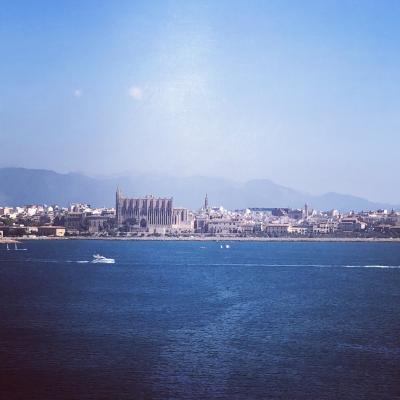What architectural styles became more prominent in Mallorca as secularization progressed?
Similar Topics
mallorca secular architecture
neoclassical architecture mallorca
gothic architecture mallorca
baroque churches mallorca
modernisme mallorca
modernist architecture palma
contemporary mallorcan design
mallorcan architectural styles
As secularization progressed in Mallorca, architectural styles reflecting more practical, civic, and residential functions began to gain prominence, moving beyond the strong religious influence that had previously dominated the island’s built environment. During earlier periods, ecclesiastical architecture, characterized by Gothic and Baroque churches and monasteries, was the defining feature of Mallorca’s skyline. However, as society became less centered on the church and more engaged in commerce, governance, and leisure, new secular styles emerged that mirrored these changing social dynamics.
One of the prominent secular architectural trends was the rise of neoclassical architecture in the 18th and 19th centuries. This style, with its emphasis on symmetry, proportion, and restrained ornamentation, became popular for public buildings such as town halls, theaters, and educational institutions. These structures often featured grand facades with columns, pediments, and balanced window arrangements, signaling a move towards civic pride and the Enlightenment ideals of rationality and order. Concurrently, the wealthy merchant class and nobility began commissioning elegant private palaces and urban residences in this style, which balanced grandeur with modern comfort.
In addition to neoclassicism, the early 20th century saw the introduction of modernist elements into Mallorca’s architecture, especially in Palma. While secular and functional buildings like markets, train stations, and apartment complexes began to showcase simpler lines and new construction technologies, a local interpretation of Art Nouveau—known as Modernisme—also flourished. This style embraced organic motifs, decorative ironwork, and flowing curves, often applied to residences and civic buildings, reflecting Mallorca’s integration into broader European artistic movements and a shift toward a more diverse architectural vocabulary.
By the mid-20th century and into the present day, Mallorca’s secular architectural landscape continued to evolve, incorporating modern and contemporary styles that emphasize minimalism, open spaces, and the use of local materials such as stone and wood. These contemporary designs often merge traditional Mallorcan elements with global architectural trends, highlighting a continued progression away from the island’s purely religious architectural heritage toward a more pluralistic and secular urban identity. This evolution mirrors Mallorca’s transformation into a cosmopolitan destination that values both its history and its present-day cultural dynamism.
One of the prominent secular architectural trends was the rise of neoclassical architecture in the 18th and 19th centuries. This style, with its emphasis on symmetry, proportion, and restrained ornamentation, became popular for public buildings such as town halls, theaters, and educational institutions. These structures often featured grand facades with columns, pediments, and balanced window arrangements, signaling a move towards civic pride and the Enlightenment ideals of rationality and order. Concurrently, the wealthy merchant class and nobility began commissioning elegant private palaces and urban residences in this style, which balanced grandeur with modern comfort.
In addition to neoclassicism, the early 20th century saw the introduction of modernist elements into Mallorca’s architecture, especially in Palma. While secular and functional buildings like markets, train stations, and apartment complexes began to showcase simpler lines and new construction technologies, a local interpretation of Art Nouveau—known as Modernisme—also flourished. This style embraced organic motifs, decorative ironwork, and flowing curves, often applied to residences and civic buildings, reflecting Mallorca’s integration into broader European artistic movements and a shift toward a more diverse architectural vocabulary.
By the mid-20th century and into the present day, Mallorca’s secular architectural landscape continued to evolve, incorporating modern and contemporary styles that emphasize minimalism, open spaces, and the use of local materials such as stone and wood. These contemporary designs often merge traditional Mallorcan elements with global architectural trends, highlighting a continued progression away from the island’s purely religious architectural heritage toward a more pluralistic and secular urban identity. This evolution mirrors Mallorca’s transformation into a cosmopolitan destination that values both its history and its present-day cultural dynamism.
🧩 Related Questions
Related Question
Are there any special care instructions for maintaining olive wood items bought from Olivart?
Related Question
How do all-inclusive family resorts in Mallorca enhance convenience for parents during their stay?
Related Question
How did international relations in the Mediterranean affect piracy in Mallorca?
